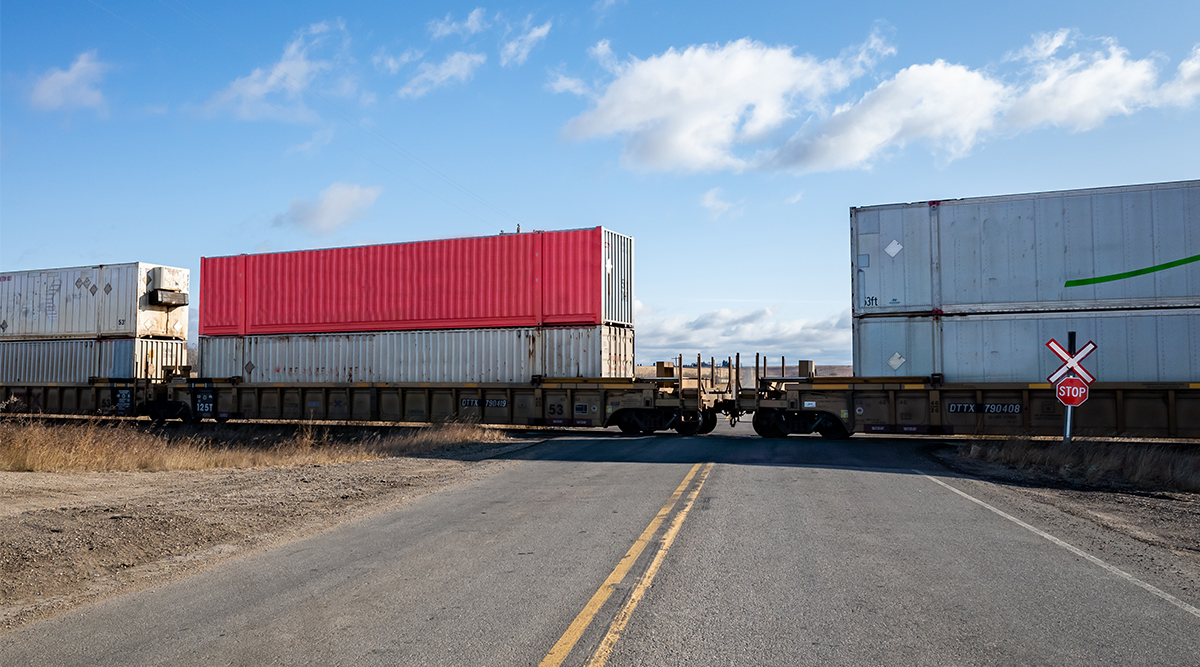Issue 2: Capacity’s Response to Demand
Hello again and welcome to the Legacy Monthly Shipment, your go-to source for all things supply chain-related, told from a unique insider’s perspective.
With COVID-19 constraints gradually starting to be lifted, the global supply chain has started to stabilize, but shippers still face a great degree of uncertainty. To that end, our focus today will be capacity’s response to demand, and the uncertainty of that demand.
Today’s Shipment:
- After a surprising first-quarter high, one of the world’s largest shipping companies predicts a dismal second quarter.
- B2B shippers that find themselves in a tight spot look to expand their customer base.
- High utilization and low capacity have shippers looking for warehousing alternatives.
- China to Europe air freight rates finally stabilize, with China to U.S. rates expected to follow.
- Legacy shares air and ocean freight market insights.
- Legacy provides a few pointers on how to stay connected in these trying times.
REPORT
Moller-Maersk Predicts Significant Decrease in Container Shipping Volumes
After posting better-than-expected first-quarter earnings — the product of a concerted effort to offset declining demand — Danish shipping giant A.P. Moller-Maersk is now predicting a 20%–25% decrease in container volume for its second quarter.
Maersk Chief Executive Soren Skou expressed skepticism about the United States and European countries’ efforts to reopen their economies. “It’s one thing to reopen and another whether the consumer will go out shopping,” he said, adding that Maersk’s “aim is to provide capacity in line with demand.”
For Maersk, this translates to fewer sailings and increased capacity utilization on ships that are still active. The company is just one of many container shipping lines dramatically scaling back operations in light of the COVID-19-related slump in demand. In fact, industry research group Alphaliner reports that global container trade will contract 7.3% this year from 2019 levels.
Maersk isn’t the only shipping company taking precautions. Since carriers are asset intensive, they must take steps to balance their capacity against demand or otherwise risk substantial financial loss. As a result, carriers within the trans-Pacific lane — the largest trade lane in the U.S. — have reduced their eastbound capacity by approximately 25%.
As parts of the world reopen, we’re seeing a gradual rebound in volumes, creating significant space pressure in the Asia-U.S. West Coast lane. We expect carriers will begin to bring some of their capacity back online in late Q2 or Q3 as volumes continue to grow.
SURVEY
Merchants Pivot to “Business-to-Everyone Model” as Online Shopping Numbers Soar
Even with business in the very early stages of reopening, online shopping remains the channel of choice for consumers confined to their homes. According to a recent survey from Ware2Go, 87% of respondents reported that they are shopping online, and 64% said that they’ve replaced their weekly shopping trips with online ordering.
As a growing number of consumers turn to retail therapy as a reprieve from weeks spent inside, B2C eCommerce retailers are experiencing record increases in demand, thereby creating backlogs in their supply chains. B2B retailers, on the other hand, have seen their primary demand streams all but dry up. We’ve all seen the news reports of farmers who typically sell to the restaurant and food service market being forced to dump surplus product; unfortunately, it’s a story that’s played out across many retail verticals.
Some enterprising merchants, however, have found a way to make the most out of a bad situation by pivoting from a B2B to a business-to-everyone (B2E) model. Rather than concentrate their sales efforts on B2B channels, B2E sellers take a multi-channel approach, selling to businesses and consumers alike. Although the increase in B2C eCommerce demand will likely slow once COVID-related concerns have passed, retailers who have shifted from B2B to B2E can expects to see long-term gains.
Legacy recently acquired Direct Shot Distributing and, with that acquisition, gained 1 million square feet of B2C distribution space — space that not only complements our international and domestic transportation services, but also positions us for this growing B2E market.
UPDATE
Warehouse Capacity Contracts as Inventory Levels Increase
The Logistics Managers’ Index (LMI) reached an all-time low of 51.3 in April, indicating a cooling off period following a flurry of activity. The LMI’s latest report also showed that transportation utilization, transportation prices and warehouse capacity have all contracted since the start of the COVID-19 pandemic. Taken as a whole, this paints a troubling picture: As consumer demand for certain goods has dramatically decreased, shippers find themselves with excess inventory on-hand and no place to store it. The LMI’s findings support this, with warehouse utilization exceeding warehouse capacity, 60.7 to 46.7.
Although early plans for reopening have inspired cautious optimism amongst retailers, the immediate need for storage has led some shippers to turn to third-party logistics companies for warehouse capacity. It’s a practical choice, one that makes sense for a few reasons: Warehousing is not most retailers’ core competency, so having the support of a team that specializes in supply chain engineering can reveal opportunities to increase operational efficiency. Perhaps most relevant, 3PLs can provide shippers with the stability they need in order to weather supply chain disruption — such as, say, a global pandemic — by leveraging their partner network.
If you find yourself in need of additional warehouse capacity, just give Legacy a shout — we’re happy to help.
NEWS
Air Freight Rates Stabilize in Light of New Capacity
After weeks of sky-high rates due to limited capacity, the air freight market is finally starting to stabilize. According to Freight Investor Services (FIS), Shanghai to Europe prices have declined by 47 cents per kilo, Hong Kong to Europe has fallen by 18 cents per kilo, and China to Europe has fallen 32 cents per kilo. This trend has continued into June, with rates continuing to fall unevenly by origin. Legacy has seen rates come down 25%–30% since late April and May due to a number of factors, including increased capacity due to passenger flights retrofitted for cargo, the FAA approving cargo to be loaded in passenger seats, and a decrease in demand for PPE from China.
That said, shippers would do well not to take this slowdown for granted. Although the increase in capacity has allowed for a brief reprieve from skyrocketing air freight rates, ocean freight challenges might result in urgent cargo being switched to air, which could contribute to future market volatility. Shippers are advised to proceed with caution, and closely monitor the situation out of China for the next few weeks.
Legacy expects overall volumes to grow continuously, if unsteadily, through the rest of the year. Although much of the retail air freight volume has largely remained stagnant due to slow demand, this will likely change as businesses reopen and retail ramps up. Ocean carriers have been stingy with capacity to hold rates but that could change in the near future. Ultimately, Q3 will be all about capacity. Our advice? Plan early for your shipments and maintain higher levels of safety stock to ride it out.
MARKET
What We’re Seeing in the Market
At press time, the Legacy team is seeing air freight pricing dropping precipitously in some lanes by as much as 40%–50% due to the cancellation of essential goods, particularly facemasks. With airlines implementing cash on delivery, we recommend that any shippers that have arranged air cargo inform their customers to pay in full before the aircraft takes off.
By comparison, the ocean freight market has really taken off, and space on the West Coast — particularly in the LA-LB port — is extremely limited. There is still a significant backlog at origin points, resulting in offloading issues and no new bookings available over the past 14 days. Steam ship lines have removed 20% of capacity from the trans-Pacific market, thereby creating an artificial surge in demand. Though demand is steadily increasing, it’s still over 20% below last year’s levels. This tightening of capacity means that higher paying cargo is more likely to move than lower payer. As of June 1st, market rates are up 25% in the trans-Pacific eastbound market.
OPINION
In Times Like These, Communication is Key
If there’s one thing that Legacy has learned as a company as a result of this experience, it’s that communication is key. In this strange new world in which everything is remote, it’s vital that businesses — be they shippers, transportation brokers, freight carriers, or anything in between — stay visible to clients and maintain strong internal communications in order to keep things moving as smoothly as possible.
A few thoughts on how to stay connected:
- From video conferencing software to instant messaging to VoIP, look for creative solutions to keep you connected and accountable.
- Don’t be afraid of over-communicating with your upstream and downstream supply chain partners — including your vendors, transportation and logistics service providers, distributors and customers. In times like these, it’s important to stay top of mind.
- Even when you’re under pressure, don’t allow supply chain communications to lag; escalate any issues your clients may be experiencing through the appropriate channels and rely on your support team to problem solve.
- The best contingency plans are built on strong communication, so make sure your business has an effective cascading communications process in place.
Things are still far from normal — market volatility and the ensuing demand uncertainty remain a serious concern across the air, ocean and truck freight sectors of the transportation industry. If you need assistance planning out your shipments or developing a communication strategy, Legacy Supply Chain is here to advise.
What news stories have caught your attention this month? Shoot us a quick email and let us know — we’re always interested in hearing from our readers. And, as always, for more supply chain-related news and insights, you can head on over to our blog or talk to one of our specialists today.
-
6 Cornerstones to a Successful 3PL-Customer Relationship
Hiring a third-party logistics (3PL) provider is a strategic approach for businesses to increase their capacity without expanding their...
+ Read more -
Canadian Rail Strike? – What We Know So Far
On May 1st, CN (Canadian National Railway) and CPKC (Canadian Pacific Kansas City) rail workers voted overwhelmingly to authorize a strike...
+ Read more -
2024 Q1 Freight Landscape: Trends, Challenges, and Predictions
As the first quarter of 2024 comes to an end, here are some observations over the past few months as well as predictions about the trucking...
+ Read more





